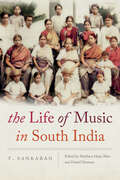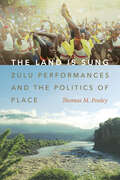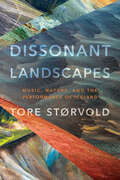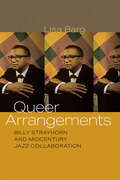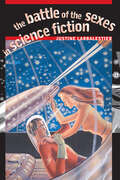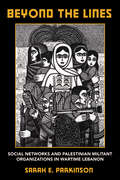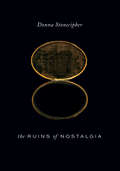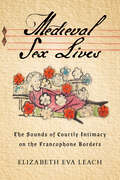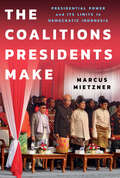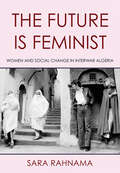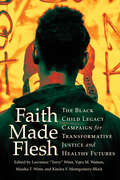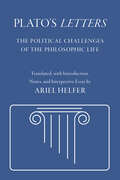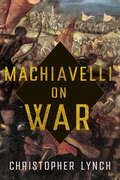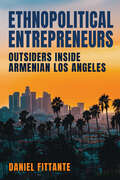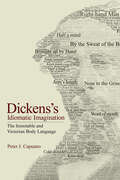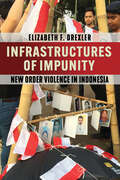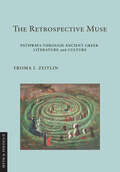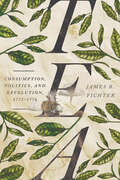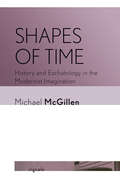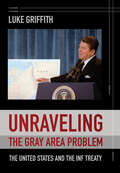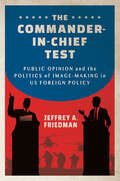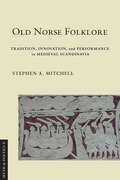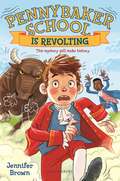- Table View
- List View
The Life of Music in South India (Music / Culture)
by T. SankaranThis book offers an account of Carnatic music culture drawing on the knowledge of T. Sankaran, a musician raised in an illustrious non-Brahmin devadasi family, and his long affiliation with cultural institutions including All India Radio (AIR) and the Tamil Isai Sangam (Tamil Music Academy). Sankaran examines the cultural and social matrix in which Carnatic music was cultivated and consumed in mid-twentieth century India, including the ways that musicians negotiated caste politics and the double standard for male and female musicians. The memoir provides insight into the way AIR worked as a modern, bureaucratic institution, and how the opening of government music colleges interacted with caste politics and shifted women's participation in public performance. The book is polyvocal, as Sankaran's writing is interwoven with passages from Daniel M. Neuman's book The Life of Music in North India, which inspired Sankaran's project, as well as transcripts from interviews with Sankaran by Matthew Allen. Includes rare archival photos.
The Land Is Sung: Zulu Performances and the Politics of Place (Music / Culture)
by Thomas M. PooleyWhat does it mean to belong? In The Land is Sung, musicologist Thomas M. Pooley shows how performances of song, dance, and praise poetry connect Zulu communities to their ancestral homes and genealogies. For those without land tenure in the province of KwaZulu-Nata, performances articulate a sense of place. Migrants express their allegiances through performance and spiritual relationships to land are embodied in rituals that invoke ancestral connection while advancing well-being through intergenerational communication. Engaging with justice and environmental ethics, education and indigenous knowledge systems, musical and linguistic analysis, and the ethics of recording practice, Pooley's analysis draws on genres of music and dance recorded in the midlands and borderlands of South Africa, and in Johannesburg's inner city. His detailed sound writing captures the visceral experiences of performances in everyday life. The book is richly illustrated and there is a companion website featuring both video and audio examples.
Dissonant Landscapes: Music, Nature, and the Performance of Iceland (Music / Culture)
by Tore StørvoldDuring the past three decades, Iceland has attained a strong presence in the world through its musical culture, with images of the nation being packaged and shipped out in melodies, harmonies, and rhythms. What 'Iceland' means for people, both at home and abroad, is conditioned by music and its ability to animate notions of nature and nationality. In six chapters that range from discussions of indie rock ballads to 'Nordic noir' television music, Dissonant Landscapes describes the capacity of musical expression to transform ideas about nature and nationality on the northern edges of Europe.
Fierce Elegy (Wesleyan Poetry Series)
by Peter GizziPeter Gizzi has said that "the elegy is a mode that can transform a broken heart in a fierce world into a fierce heart in a broken world." For Gizzi, ferocity can be reimagined as vulnerability, bravery and discovery, a braiding of emotional and otherworldly depth, "a holding open." In Gizzi's voice joy and sorrow make a complex ecosystem. In their quest for a lyric reality, these poems remind us that elegy is lament but also—as it has been for centuries—a work of love. "This new poetry," Kamau Brathwaite has written about Gizzi, "taking such care of temperature—the time & details of the world—meaning the space(s) in which we live—defining love in this way. Writing along the edge. A way of writing about hope." [sample poem] Creely Song all that is lovely in words, even if gone to pieces all that is lovely gone, all of it for love and autobiography as if I were writing thishello, listen the plan is the body and all of it for love now in pieces all that is lovely echoes still in life & death still memory gardens open onto windows lovely, the charm that mirrors all that was, all that is, lovely in a song
Queer Arrangements: Billy Strayhorn and Midcentury Jazz Collaboration (Music / Culture)
by Lisa BargThe legacy of Black queer composer, arranger, and pianist Billy Strayhorn (1915–1967) hovers at the edge of canonical jazz narratives. Queer Arrangements explores the ways in which Strayhorn's identity as an openly gay Black jazz musician shaped his career, including the creative roles he could assume and the dynamics between himself and his collaborators, most famously Duke Ellington, but also iconic singers such as Lena Horne and Ella Fitzgerald. This new portrait of Strayhorn combines critical, historically-situated close readings of selected recordings, scores, and performances with biography and cultural theory to pursue alternative interpretive jazz possibilities, Black queer historical routes, and sounds. By looking at jazz history through the instrument(s) of Strayhorn's queer arrangements, this book sheds new light on his music and on jazz collaboration at midcentury.
The Battle of the Sexes in Science Fiction (Early Classics of Science Fiction)
by Justine LarbalestierHow women and feminism helped to shape science fiction in America.Runner-up for the Hugo Best Related Book Award (2003)The Battle of the Sexes in Science Fiction is a lively account of the role of women and feminism in the development of American science fiction during its formative years, the mid-20th century. Beginning in 1926, with the publication of the first issue of Amazing Stories, Justine Larbalestier examines science fiction's engagement with questions of femininity, masculinity, sex and sexuality. She traces the debates over the place of women and feminism in science fiction as it emerged in stories, letters and articles in science fiction magazines and fanzines. The book culminates in the story of James Tiptree, Jr. and the eponymous Award. Tiptree was a successful science fiction writer of the 1970s who was later discovered to be a woman. Tiptree's easy acceptance by the male-dominated publishing arena of the time proved that there was no necessary difference in the way men and women wrote, but that there was a real difference in the way they were read.
Beyond the Lines: Social Networks and Palestinian Militant Organizations in Wartime Lebanon
by Sarah E. ParkinsonBeyond the Lines explores the social underpinnings of rebel adaptation and resilience. How do rebel groups cope with crises such as repression, displacement, and fragmentation? What explains changes in militant organizations' structures and behaviors over time? Drawing on nearly two years of ethnographic research, Sarah E. Parkinson traces shifts in Palestinian militant groups' internal structures and practices during the civil war of 1975 to 1990 and foreign occupations of Lebanon. She shows that most militants approach asymmetrical warfare as a series of challenges centered around information and logistics, characterized by problems such as supplying constantly mobile forces, identifying collaborators, disrupting rival belligerents' operations, and providing essential services like healthcare. Effective negotiation of these challenges contributes to militant organizations' resilience and survival. In this context, the foundation of rebel resilience lies with militants' ability to repurpose their everyday social networks to organizational ends. In the Lebanese setting, Beyond the Lines demonstrates how regionalized differences in Israeli, Syrian, and Lebanese deployment of violence triggered distinct social network responses that led to divergent organizational outcomes for Palestinian militants.
mahogany (Wesleyan Poetry Series)
by erica lewismahogany takes its name from the dark wood prized for its durability, workability, and elegant look, and from the Diana Ross movie, whose theme song asks if what lies ahead is what you really want. This book is the third in a trilogy, and like the first two books it is steeped in pop music. Each poem here takes its title from a line of a Diana Ross and The Supremes song, as well as songs from Diana Ross' solo career. Short lines flow down the page like postmodern psalms, connecting dailyness to timelessness, merging the historical and the beloved through reverence for family, music, and the life we actually live. mahogany is a lament for the passing of time and unimaginable loss, and at the same time it models the daily search for joy, and the deep shine that can arise from the darkest times.[sample poem]i'm like a woman who once knew splendor* sometimes i feel like the pink pantherall naked and pinklost in the morass ofdo the best you can todayand nigga heal thy selfour end of winterspirits breaklike old tibetan snowi rememberyou was conflictedand i found myself alonehere on my ancient hurtthe disquieting humof living historydear god, pleaseput my head above my heartwe can only be togetherif the stories are toldplain facesame instrumentjust a couple of coke bottlesfull of gasolinelike god and rainis a waste of timemy mother used to clean housesas a childsome days i can barelyget out of bedin my mindshe's like diana rossscrubbing the white lady's stairsin lady sings the bluesexcept prettierand with green eyesi've just been livingoff of cough dropsand water and angerjust sitting in the whole foodsparking lot eating pineapplei am literallythe definition of "hot mess"pain changes everythingsomebody comeand pick upmy limp bodyoff the groundi am dyinga slow ohio deathwe miss you starmanit's our first sunrise of the burn* "dark side of the world"erica lewis
The Ruins of Nostalgia (Wesleyan Poetry Series)
by Donna StonecipherWhat is it to feel nostalgia, to be skeptical of it yet cleave intently to the complex truths of feeling and thought? In a series of 64 gorgeous, ramifying, unsettling prose poems addressing late-twentieth- and twenty-first century experience and its discontents, The Ruins of Nostalgia offers a strikingly original exploration of the misunderstood phenomenon of nostalgia as both feeling-state and historical phenomenon. Each poem, also titled The Ruins of Nostalgia, is a kind of lyrical mini-essay, playful, passionate, analytic. Some poems take a location, memory, conceit, or object as their theme. Throughout the series, the poems recognize and celebrate the nostalgias they ironize, which are in turn celebrated and then ironized again. Written often in the fictional persona of the first-person plural, The Ruins of Nostalgia explores the rich territory where individual response meets a collective phenomenon.[sample poem]The Ruins of Nostalgia 13Where once there had been a low-end stationery store minded by an elderly beauty queen, there was now a store for high-end espresso machines minded by nobody. Where once there had been an illegal beer garden in a weedy lot, there was now a complex of luxury lofts with Parisian-style ivory façades. Where once there had been a bookstore and a bike shop and a bakery, there was now a wax museum for tourists. Where once there had been an empty lot there was now a building. Where once there had been an empty lot there was now a building. Where once there had been an empty lot there was now a building. Where once there had been an empty lot there was now a building. Where once there had been farms there were now subdivisions. Where once there had been subdivisions there were now sub-subdivisions. We lived in a sub-subdivision of a subdivision. We ourselves had become subdivided—where once we had merely been of two minds. * Where once there had been a river there was now a road. A vocal local group had started a movement to break up the road and "daylight" the river, which still flowed, in the dark, underneath the road. * Could we daylight the farms, the empty lots, the stationery store, the elderly beauty queen, the city we moved to? Was it still flowing somewhere, under the luxury lofts, deliquescing in the dark, inhabited by our luxury selves, not yet subdivided, because not yet whole? * Could we daylight the ruins of nostalgia?
Medieval Sex Lives: The Sounds of Courtly Intimacy on the Francophone Borders
by Elizabeth Eva LeachMedieval Sex Lives examines courtly song as a complex cultural product and social force in the early fourteenth century, exploring how it illuminates the relationship between artistic production and the everyday lives of the elites for whom this music and poetry was composed and performed. In a focused analysis of the Oxford Bodelian Library's Douce 308 manuscript—a fourteenth-century compilation that includes over five hundred Old French lyrics composed over two centuries alongside a narrative account of elaborate courtly festivities centered on a week-long tournament—Elizabeth Eva Leach explores two distinct but related lines of inquiry: first, why the lyric tradition of "courtly love" had such a long and successful history in Western European culture; and, second, why the songs in the Bodleian manuscript would have been so important to the book's compilers, owners, and readers. The manuscript's lack of musical notation and authorial attributions make it unusual among Old French songbooks; its arrangement of the lyrics by genre invites inquiry into the relationship between this long musical tradition and the emotional and sexual lives of its readers. Combining an original account of the manuscript's contents and their likely social milieu with in-depth musical and poetic analyses, Leach proposes that lyrics, whether read or heard aloud, provided a fertile means of propagating and enabling various sexual scripts in the Middle Ages. Drawing on musicology, literary history, and the sociology and psychology of sexuality, Medieval Sex Lives presents a provocative hypothesis about the power of courtly songs to model, inspire, and support sexual behaviors and fantasies.
The Coalitions Presidents Make: Presidential Power and Its Limits in Democratic Indonesia (Cornell Modern Indonesia Project)
by Marcus MietznerIn The Coalitions Presidents Make, Marcus Mietzner explains how Indonesia has turned its volatile post-authoritarian presidential system into one of the world's most stable. He argues that since 2004, Indonesian presidents have deployed nuanced strategies of coalition building to consolidate their authority and these coalitions are responsible for the regime stability in place today. In building coalitions, Indonesian presidents have looked beyond parties and parliament—the traditional partners of presidents in most other countries. In Indonesia, actors such as the military, the police, the bureaucracy, local governments, oligarchs, and Muslim groups are integrated into presidential coalitions by giving them the same status as parties and parliament. But while this inclusiveness has made Indonesia's presidential system extraordinarily durable, it has also caused democratic decline. In order to secure the stability of their coalitions, presidents must observe the vested interests of each member when making policy decisions. The Coalitions Presidents Make details the process through which presidents balance their own powers and interests with those of their partners, encouraging patronage-oriented collaboration and disincentivizing confrontation.
The Future Is Feminist: Women and Social Change in Interwar Algeria
by Sara RahnamaThe Future Is Feminist by Sara Rahnama offers a closer look at a pivotal moment in Algerian history when Algerians looked to feminism as a path out of the stifling realities of French colonial rule. Algerian people focused outward to developments in the Middle East, looking critically at their own society and with new eyes to Islamic tradition. In doing so, they reordered the world on their own terms—pushing back against French colonial claims about Islam's inherent misogyny. Rahnama describes how Algerians took inspiration from Middle Eastern developments in women's rights. Empowered by the Muslim reform movement sweeping the region, they read Islamic knowledge with new eyes, even calling Muhammad "the first Arab feminist." They compared the blossoming women's rights movements across the Middle East and this history of Islam's feminist potential to the stifled position of Algerian women, who suffered from limited access to education and respectable work. Local dynamics also shaped these discussions, including the recent entry of thousands of Algerian women into the workforce as domestic workers in European settler homes. While Algerian people disagreed about whether Algeria's future should be colonial or independent, they agreed that women's advancement would offer a path forward for Muslim society toward a more prosperous future. Through its use of Arabic-language sources alongside French ones, The Future Is Feminist moves beyond Algeria's colonial relationship to France to illuminate its relationship to the Middle East.
Faith Made Flesh: The Black Child Legacy Campaign for Transformative Justice and Healthy Futures (Publicly Engaged Scholars: Identities, Purposes, Practices)
by Lawrence “Torry” Winn, et al.Faith Made Flesh brings together the experience, insight, and stories of those actively addressing societal and educational disadvantages of Black children in Sacramento, California. Editors Lawrence "Torry" Winn, Vajra M. Watson, Maisha T. Winn, and Kindra F. Montgomery-Block seek to offer viable solutions to racial injustice by centering the voices of organizers, policymakers, educators, scholars, and young people alike. Focused on the Black Child Legacy Campaign (BCLC), a ten-year community-driven initiative to respond to disproportionate health outcomes, the contributors analyze the impact of the BCLC's successes, providing an empirically rich narrative of its transformative alliances and radical actions. Through timely and urgent case studies and personal reflections, Faith Made Flesh advances the need to address societal challenges through creative engagement with diverse institutional and individual stakeholders. The findings offer an innovative model to other regions aiming to cultivate thriving community-city-school partnerships that center the well-being of Black children and Black futures.
Plato's "Letters": The Political Challenges of the Philosophic Life (Agora Editions)
by PlatoIn Plato's "Letters", Ariel Helfer provides to readers, for the first time, a highly literal translation of the Letters, complete with extensive notes on historical context and issues of manuscript transmission. His analysis presents a necessary perspective for readers who wish to study Plato's Letters as a work of Platonic philosophy. Centuries of debate over the provenance and significance of Plato's Letters have led to the common view that the Letters is a motley collection of jewels and scraps from within and without Plato's literary estate. In a series of original essays, Helfer describes how the Letters was written as a single work, composed with a unity of purpose and a coherent teaching, marked throughout by Plato's artfulness and insight and intended to occupy an important place in the Platonic corpus. Viewed in this light, the Letters is like an unusual epistolary novel, a manner of semifictional and semiautobiographical literary-philosophic experiment, in which Plato sought to provide his most demanding readers with guidance in thinking more deeply about the meaning of his own career as a philosopher, writer, and political advisor.Plato's "Letters" not only defends what Helfer calls the "literary unity thesis" by reviewing the scholarly history pertaining to the Platonic letters but also brings out the political philosophic lessons revealed in the Letters. As a result, Plato's "Letters" recovers and rehabilitates what has been until now a minority view concerning the Letters, according to which this misunderstood Platonic text will be of tremendous new importance for the study of Platonic political philosophy.
Machiavelli on War
by Christopher LynchMachiavelli on War offers a comprehensive interpretation of the philosopher-historian's treatment of war throughout his writings, from poems and memoranda drafted while he was Florence's top official for military matters to his posthumous works, The Prince and Discourses on Livy. Christopher Lynch argues that the issue of war permeates the form and content of each of Machiavelli's works, the substance of his thoughts, and his own activity as a writer, concluding that he was the first great modern philosopher because he was the first modern philosopher of war.Lynch details Machiavelli's understanding of warfare in terms of both actual armed conflict and at the intellectual level of thinkers competing on the field of knowledge and belief. Throughout Machiavelli's works, he focuses on how military commanders' knowledge of human necessities, beginning with their own, enables and requires them to mold soldiers, organizationally and politically, to best deploy them in operations attuned to political context and changing circumstances. Intellectually, leaders must shape minds, their own and others', to reject beliefs that would weaken their purpose; for Machiavelli, this meant overcoming the classical and Christian traditions in favor of a new teaching of human freedom and excellence. As Machiavelli on War makes clear, prevailing both on the battlefield and in the war of ideas demands a single-minded engagement in "reasoning about everything," beginning with oneself. For Machiavelli, Lynch shows, the successful military commander is not just an excellent leader but also an excellent human being in constant pursuit of the truth about themselves and the world.
Ethnopolitical Entrepreneurs: Outsiders inside Armenian Los Angeles
by Daniel FittanteEthnopolitical Entrepreneurs presents the story of the Armenians of Glendale, California. Coming from Argentina, Armenia, Egypt, Iran, Jordan, Lebanon, Russia, Syria, and many other countries, this group is internally fragmented and often has limited experience with the American political system. Nonetheless, Glendale's Armenians have rapidly mobilized and remade an American suburban space in their own likeness. In telling their story, Daniel Fittante expands our understanding of US political history. From the late nineteenth-century onward, Irish, Italian, Jewish, and several other immigrant populations in large American cities began changing the country's political reality. The author shows how Glendale's Armenians—as well as many other immigrants—are now changing the country's political reality within its dynamic, multiethnic suburbs. The processes look different in various suburban contexts, but the underlying narrative holds: immigrant populations converge on suburban areas and ambitious political actors develop careers by driving coethnics' political incorporation.
Dickens's Idiomatic Imagination: The Inimitable and Victorian Body Language
by Peter J. CapuanoDickens's Idiomatic Imagination offers an original analysis of how Charles Dickens's use of "low" and "slangular" (his neologism) language allowed him to express and develop his most sophisticated ideas. Using a hybrid of digital (distant) and analogue (close) reading methodologies, Peter J. Capuano considers Dickens's use of bodily idioms—"right-hand man," "shoulder to the wheel," "nose to the grindstone"—against the broader lexical backdrop of the nineteenth century. Dickens was famously drawn to the vernacular language of London's streets, but this book is the first to call attention to how he employed phrases that embody actions, ideas, and social relations for specific narrative and thematic purposes. Focusing on the mid- to late career novels Dombey and Son, David Copperfield, Bleak House, Great Expectations, and Our Mutual Friend, Capuano demonstrates how Dickens came to relish using common idioms in uncommon ways and the possibilities they opened up for artistic expression. Dickens's Idiomatic Imagination establishes a unique framework within the social history of language alteration in nineteenth-century Britain for rethinking Dickens's literary trajectory and its impact on the vocabularies of generations of novelists, critics, and speakers of English.
Infrastructures of Impunity: New Order Violence in Indonesia (Cornell Modern Indonesia Project)
by Elizabeth F. DrexlerIn Infrastructures of Impunity Elizabeth F. Drexler argues that the creation and persistence of impunity for the perpetrators of the Cold War Indonesian genocide (1965–66) is not only a legal status but also a cultural and social process. Impunity for the initial killings and for subsequent acts of political violence has many elements: bureaucratic, military, legal, political, educational, and affective. Although these elements do not always work at once—at times some are dormant while others are ascendant—together they can be described as a unified entity, a dynamic infrastructure, whose existence explains the persistence of impunity. For instance, truth telling, a first step in many responses to state violence, did not undermine the infrastructure but instead bent to it. Creative and artistic responses to revelations about the past, however, have begun to undermine the infrastructure by countering its temporality, affect, and social stigmatization and demonstrating its contingency and specific actions, policies, and processes that would begin to dismantle it. Drexler contends that an infrastructure of impunity could take hold in an established democracy.
The Retrospective Muse: Pathways through Ancient Greek Literature and Culture (Myth and Poetics II)
by Froma I. ZeitlinThe Retrospective Muse showcases the celebrated work of Froma I. Zeitlin. Over many decades, Zeitlin's innovative studies have changed the field of classics. Her instantly recognizable work brings together anthropology, gender studies, cultural studies, and an acute literary sensibility to open ancient texts and ideas to new forms of understanding. A selection of her luminous essays on topics still timely today are collected for the first time in a volume that shows the full range and flair of her remarkable intellect. Together, these illuminating analyses show why Zeitlin's work on ancient Greek culture has had an enduring impact on scholars around the world, not just in classics but across multiple fields. From Homer to the Greek novel, from religion to erotics, from myth and ritual to theatrical performance, she expounds on some of the most important works of ancient writing and some of modernity's most significant critical questions. Zeitlin's writing still sheds light on the durable aspects of classics as a discipline, and this book encapsulates her achievement.
Tea: Consumption, Politics, and Revolution, 1773–1776
by James R. FichterIn Tea, James R. Fichter reveals that despite the so-called Boston Tea Party in 1773, two large shipments of tea from the East India Company survived and were ultimately drunk in North America. Their survival shaped the politics of the years ahead, impeded efforts to reimburse the company for the tea lost in Boston Harbor, and hinted at the enduring potency of consumerism in revolutionary politics.Tea protests were widespread in 1774, but so were tea advertisements and tea sales, Fichter argues. The protests were noisy and sometimes misleading performances, not clear signs that tea consumption was unpopular. Revolutionaries vilified tea in their propaganda and prohibited the importation and consumption of tea and British goods. Yet merchant ledgers reveal these goods were still widely sold and consumed in 1775. Colonists supported Patriots more than they abided by non-consumption. When Congress ended its prohibition against tea in 1776, it reasoned that the ban was too widely violated to enforce. War was a more effective means than boycott for resisting Parliament, after all, and as rebel arms advanced, Patriots seized tea and other goods Britons left behind. By 1776, protesters sought tea and, objecting to its high price, redistributed rather than destroyed it. Yet as Fichter demonstrates in Tea, by then the commodity was not a symbol of the British state, but of American consumerism.
Shapes of Time: History and Eschatology in the Modernist Imagination (Signale: Modern German Letters, Cultures, and Thought)
by Michael McGillenShapes of Time explores how concepts of time and history were spatialized in early twentieth-century German thought. Michael McGillen locates efforts in German modernism to conceive of alternative shapes of time—beyond those of historicism and nineteenth-century philosophies of history—at the boundary between secular and theological discourses. By analyzing canonical works of German modernism—those of Karl Barth, Franz Rosenzweig, Siegfried Kracauer, and Robert Musil—he identifies the ways in which spatial imagery and metaphors were employed to both separate the end of history from a narrative framework and to map the liminal relation between history and eschatology.Drawing on theories and practices as disparate as constructivism, non-Euclidean geometry, photography, and urban architecture, Shapes of Time presents original connections between modernism, theology, and mathematics as played out within the canon of twentieth-century German letters. Concepts of temporal and spatial form, McGillen contends, contribute to the understanding not only of modernist literature but also of larger theoretical concerns within modern cultural and intellectual history.
Unraveling the Gray Area Problem: The United States and the INF Treaty
by Luke GriffithIn Unraveling the Gray Area Problem, Luke Griffith examines the US role in why the Intermediate-Range Nuclear Forces (INF) Treaty took almost a decade to negotiate and then failed in just thirty years. The INF Treaty enhanced Western security by prohibiting US and Russian ground-based missiles with maximum ranges of 500 to 5,500 kilometers. Significantly, it eliminated hundreds of Soviet SS-20 missiles, which could annihilate targets throughout Eurasia in minutes. Through close scrutiny of US theater nuclear policy from 1977 to 1987, Griffith describes the Carter administration's masterminding of the dual-track decision of December 1979, the North Atlantic Treaty Organization (NATO) initiative that led to the INF Treaty. The Reagan administration, in turn, overcame bureaucratic infighting, Soviet intransigence, and political obstacles at home and abroad to achieve a satisfactory outcome in the INF negotiations. Disagreements between the US and Russia undermined the INF Treaty and led to its dissolution in 2019. Meanwhile, the US is developing a new generation of ground-based, INF-type missiles that will have an operational value on the battlefield. Griffith urges policymakers to consider the utility of INF-type missiles in new arms control negotiations. Understanding the scope and consistency of US arms control policy across the Carter and Reagan administrations offers important lessons for policymakers in the twenty-first century.
The Commander-in-Chief Test: Public Opinion and the Politics of Image-Making in US Foreign Policy (Cornell Studies in Security Affairs)
by Jeffrey A. FriedmanIn The Commander-in-Chief Test, Jeffrey A. Friedman offers a fresh explanation for why Americans are often frustrated by the cost and scope of US foreign policy—and how we can fix that for the future.Americans frequently criticize US foreign policy for being overly costly and excessively militaristic. With its rising defense budgets and open-ended "forever wars," US foreign policy often appears disconnected from public opinion, reflecting the views of elites and special interests rather than the attitudes of ordinary citizens.The Commander-in-Chief Test argues that this conventional wisdom underestimates the role public opinion plays in shaping foreign policy. Voters may prefer to elect leaders who share their policy views, but they prioritize selecting presidents who seem to have the right personal attributes to be an effective commander in chief. Leaders then use hawkish foreign policies as tools for showing that they are tough enough to defend America's interests on the international stage. This link between leaders' policy positions and their personal images steers US foreign policy in directions that are more hawkish than what voters actually want.Combining polling data with survey experiments and original archival research on cases from the Vietnam War through the occupations of Iraq and Afghanistan, Friedman demonstrates that public opinion plays a surprisingly extensive—and often problematic—role in shaping US international behavior. With the commander-in-chief test, a perennial point of debate in national elections, Friedman's insights offer important lessons on how the politics of image-making impacts foreign policy and how the public should choose its president.
Old Norse Folklore: Tradition, Innovation, and Performance in Medieval Scandinavia (Myth and Poetics II)
by Stephen A. MitchellThe medieval northern world consisted of a vast and culturally diverse region both geographically, from roughly Greenland to Novgorod and culturally, as one of the last areas of Europe to be converted to Christianity. Old Norse Folklore explores the complexities of this fascinating world in case studies and theoretical essays that connect orality and performance theory to memory studies, and myths relating to pre-Christian Nordic religion to innovations within late medieval pilgrimage song culture.Old Norse Folklore provides critical new perspectives on the Old Norse world, some of which appear in this volume for the first time in English. Stephen A. Mitchell presents emerging methodologies by analyzing Old Norse materials to offer a better understandings ofunderstanding of Old Norse materials. He examines, interprets, and re-interprets the medieval data bequeathed to us by posterity—myths, legends, riddles, charms, court culture, conversion narratives, landscapes, and mindscapes—targeting largely overlooked, yet important sources of cultural insights.
Pennybaker School Is Revolting: Holy Places In Louisiana
by Jennifer BrownSixth-grader Thomas Fallgrout is finally settling in at Pennybaker School, home of student unicyclers, thespians, acrobats, and other classmates with unique and unusual gifts. After a bit of an unusual start to the school year, things are finally starting to seem normal. As normal as they ever could be at this decidedly unusual school, anyway. Until his Facts After the Fact (aka History) teacher Mr. Faboo goes missing, right in the middle of his favorite lesson of the year, leaving the class not a clue as to why or how. And his Four Square (aka Phys Ed) teacher introduces a new unit that is decidedly distressing. And Thomas's neighbor, the formerly friendless Chip (he of the wacky sock collection), swoops in and bonds with all of Thomas's friends, leaving Thomas in the dust. This year is getting out of control, and it's up to Thomas to take matters into his own hands. It's time… for a revolution. Featuring black-and-white illustrations throughout, this wildly funny follow-up to Pennybaker School is Headed for Disaster is full of humor and wacky wit by acclaimed author Jennifer Brown.
